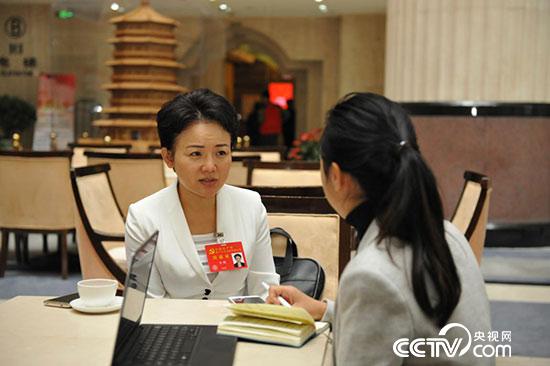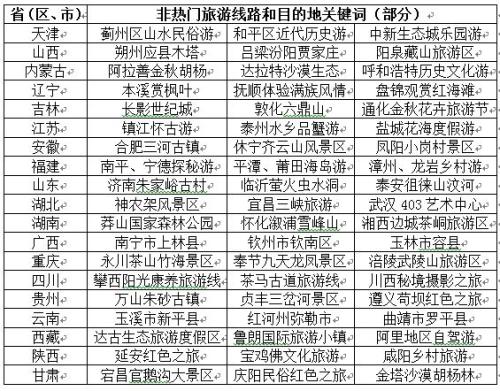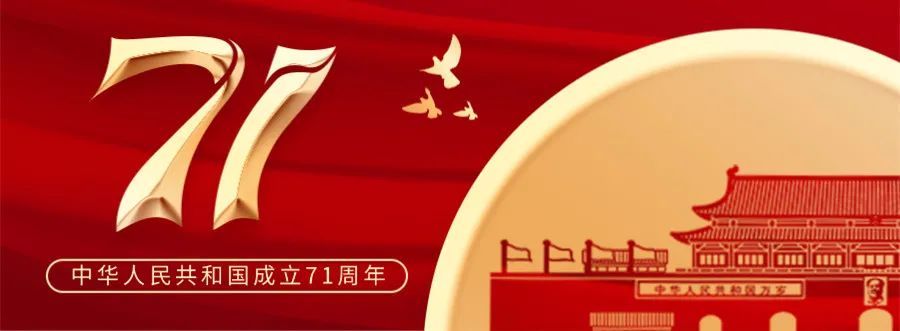
Take the subway to visit Shanghai, "never leave Shanghai" for the National Day! Rail Transit Line 10 is a famous tourist line in Shanghai Railway. Shanghai Zoo, Wu Kang Road, Xintiandi, Chenghuang Temple and Nanjing East Road are all popular punch points, and the specialty shops and food in each place should not be missed ~

-Shanghai Zoo-

Shanghai Zoo is adjacent to Shanghai Hongqiao International Airport. Founded in 1954, it was originally named Xijiao Park. There are more than 400 kinds of animals on display in the park, which is one of the top ten zoos in China.
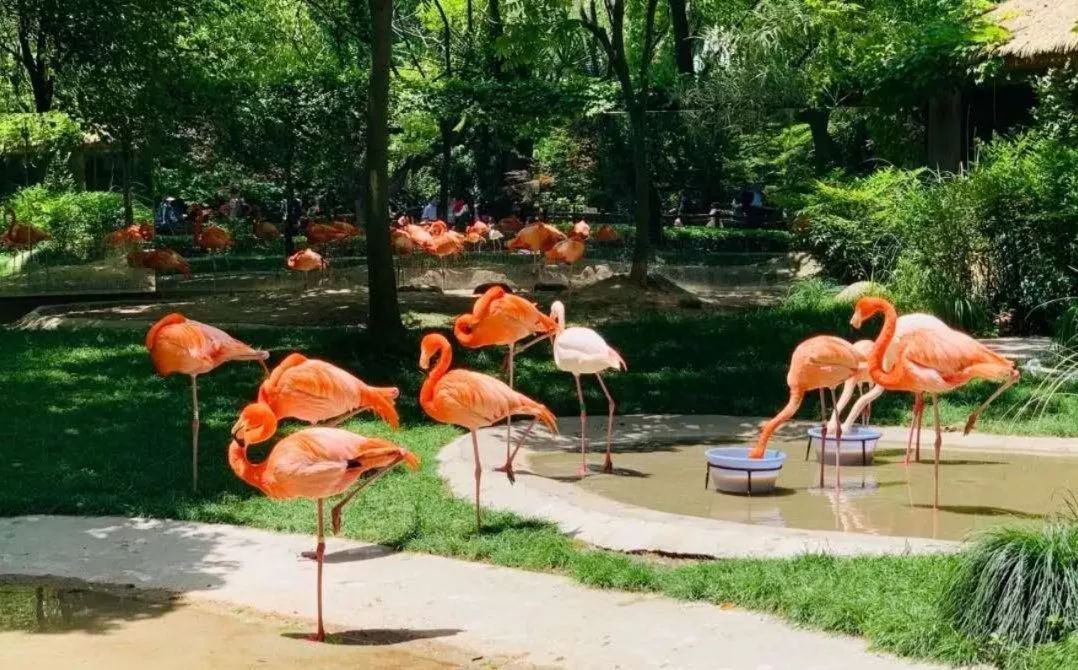
There are world-famous giant pandas known as "national treasures" and "living fossils", rare wild animals such as golden monkey, South China tiger and alligator in China, and representative animals from all over the world such as gorillas, African lions, giraffes, kangaroos and tapirs in South America.


Travel tips ↓↓↓

Address of scenic spots: No.2381 Hongqiao Road, Shanghai.
Opening hours: March 1st-October 31st: 08: 00-17: 00; 1 November-28 February: 08:00-16:30
Ticket price: Ordinary ticket: 40 yuan/person; Student ticket: 20 yuan/person; Old age ticket: 36 yuan/person
Transportation: Exit 4 of Shanghai Zoo Station on Metro Line 10.
-Huang Jincheng Road Pedestrian Street-

Gubei Huang Jincheng Road Pedestrian Street is located in the core area of Gubei, Changning, and is a municipal characteristic block. Surrounding foreign communities gather, and personalized restaurants, entertainment and living shops that are open 24 hours a day show exotic customs everywhere, providing the public with a unique open space and a safe haven away from the noise.
Ding Wang Wu Lao Guo
677 Huang Jincheng Road (near Yinzhu Road)

In Taiwan Province, Ding Wang, recommended by stars like Xiao S, Jolin Tsai and hebe, has no old pot! Super popular queuing hot pot, the whole ginseng is added to the soup base, the spicy soup base is combined with collagen beauty soup base, which is really fresh but not dry, and the ice cream tofu learned by the owner from Japan is definitely a wonderful hot pot experience.
the terrace
693 Huang Jincheng Road (near Yinzhu Road)

The terrace is a small Italian restaurant with a neighborhood style. The romantic 200-square-meter terrace restaurant and the simple cuisine produced under the guidance of the famous Italian Michelin restaurant la gallina will continue to bring surprises to diners. The newly set private box is very suitable for small parties! Especially the pizza baked with pure fruit trees is crispy outside and crisp inside, and the attractive aroma goes straight into the nasal cavity. No matter you are a herbivore or a carnivore, you can definitely get the wonderful experience of Italian family dinner here ~

Huang Jincheng Road has different beautiful scenery in different seasons. In late autumn, when ginkgo is fragrant, it has become a good place for many tourists to stop and take photos and punch in.


Address: Huang Jincheng Road, Shanghai.
Opening hours: all day
Transportation: Exit/entrance 3 of Yili Road Station of Metro Line 10.
-Shanghai Gaodaowu Department Store-
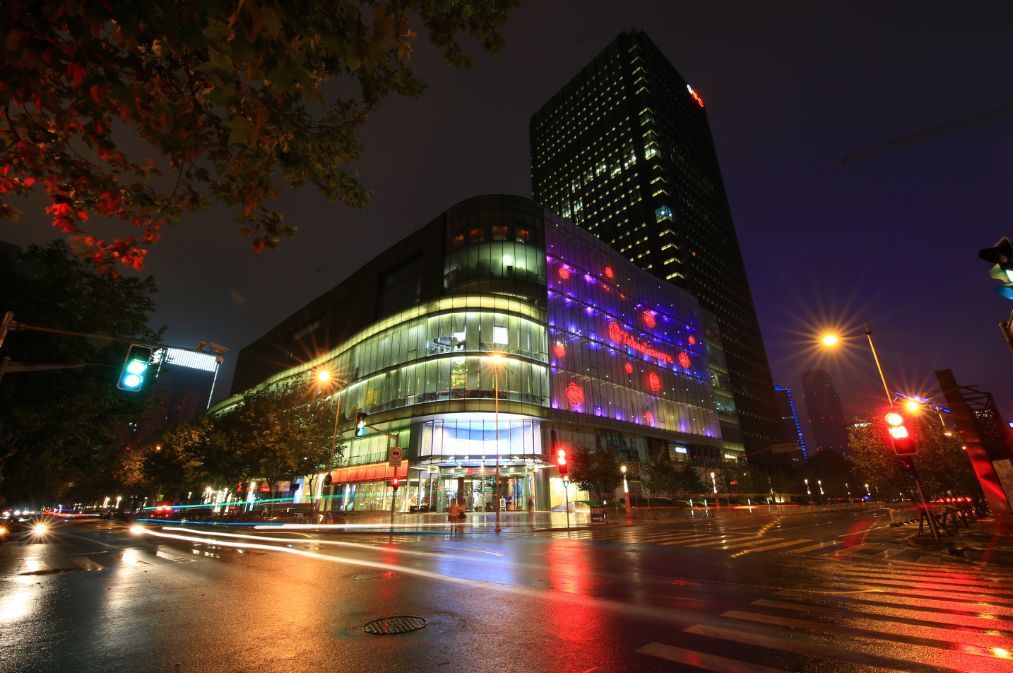
Shanghai Gaodaowu Department Store is an all-round high-end department store that covers international high-end brands, clothing, cosmetics, jewelry, household items, food and other department stores. There are many online celebrity food shops in the shopping mall, among which Qimin Market, pony Boni Workshop and Crab Pavilion are deeply loved by tourists.
Address: No.1438 Hongqiao Road, Shanghai
Opening hours: 10: 00-22: 00.
Transportation: Exit/entrance 3 of Yili Road Station of Metro Line 10.
-Cheng Shifa Art Museum-

Cheng Shifa Art Museum, which was prepared and constructed by Shanghai China Painting Academy, took nearly three years to complete, covering exhibition places, public cultural service places and multi-functional lecture halls. The art museum has six functions: collection and preservation, academic research, exhibition of works, education and promotion, cultural exchange and public service. It is not only a research and exhibition space for famous Shanghai-style artists, but also a cultural responsibility for the inheritance and development of Shanghai-style art.

Address: No.1398 Hongqiao Road, Shanghai (intersection of Hongqiao Road and Yili Road)
Opening hours: 10: 00-18: 00 (admission is closed at 17: 00). The museum is closed on Mondays and normally opens on holidays.
Transportation: Exit/entrance 3 of Yili Road Station of Metro Line 10.
-Wu Kang Road-

Wu Kang Road, located in Xuhui District, Shanghai, was originally named John Calvin Ferguson Road, named after American missionary John John Calvin Ferguson, and was built in 1907 (Guangxu thirty-three years). Wu Kang Road is known as "Celebrity Road", which condenses the modern history of Shanghai for a hundred years. There are 14 outstanding historical buildings along the road, and 37 historical buildings are preserved.

Wukang building

Bajin former residence

Hengfu style house

Cape Town Apartment
How can Wu Kang Road, which is full of European customs, be short of western food?
Pistacchio restaurant bar
1/F, No.378 Wu Kang Road
Pistacchio means pistachio, and the environment will remind people of many beautiful restaurants in Europe and America.

The restaurant focuses on northern Italian cuisine, while incorporating the cooking styles of Provence and the Mediterranean, and many creative meals are presented in an unprecedented way.

The most important thing to miss in this store is Shu Fulei. It can be said that the store must order. Order one while it is hot, with a cup of coffee, which is sweet, soft and not greasy.
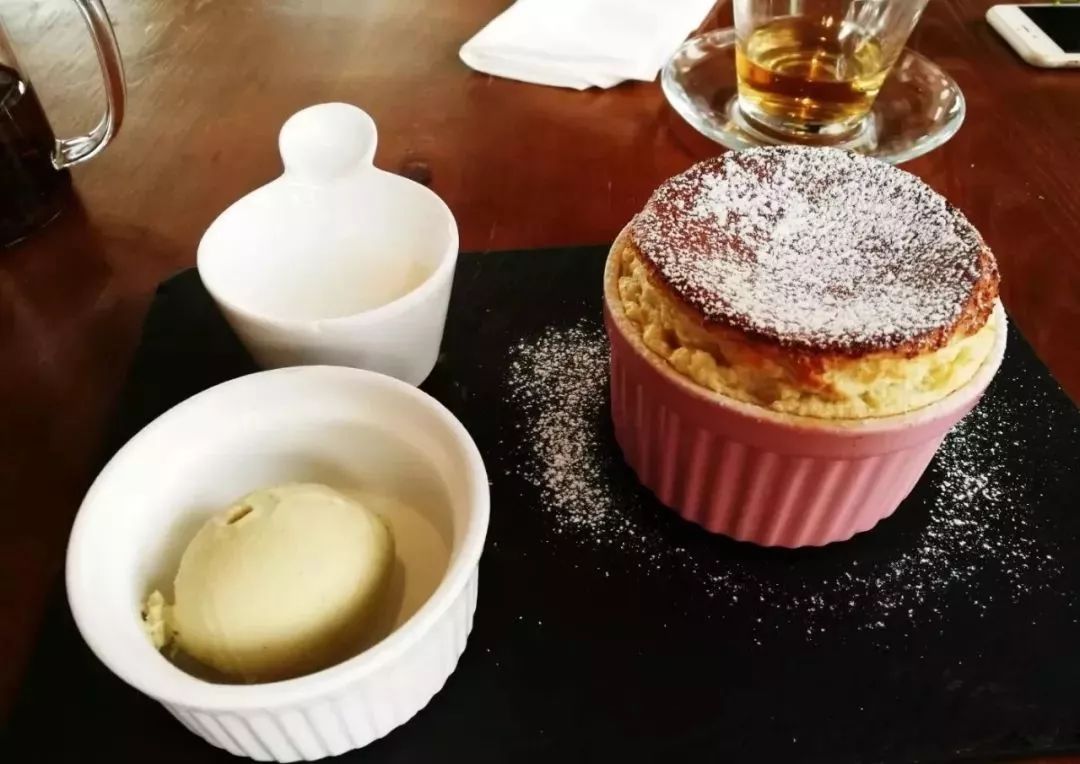
Address: Wu Kang Road, Shanghai.
Opening hours: all day
Transportation: Exit 3 of Shanghai Library Station on Rail Transit Line 10.
-Xintiandi-

Strolling through a new world is like going back in time, like being in Shanghai in the 1920s and 1930s, but stepping into every building in one step is very modern and fashionable. K11, Hong Kong Plaza, Xintiandi Plaza, Zhonghai Huanyuhui, Fuxing soho…… … these well-known trend landmarks have attracted numerous famous brands at home and abroad.

For foodies, Xintiandi is also a good place to punch in! Japanese food, western food, hot pot, dessert … This is a "gathering place for food from all over the world"!
·shake shack·
No.10, Xintiandi Beili, Lane 181, Taicang Road

God-class hamburger restaurant from new york! Almost every time I go, I have to queue up! The signature beef burger that must be ordered, the beef patties are thick and tender, which have completely exploded many hamburger shops.

·green & safe·
Floor 1, No.22, Xintiandi Beili, Lane 181, Taicang Road

Super popular organic restaurant! The popularity is not lost, shake shack!

The store is full of fruits and vegetables, as well as meat from YEATION all over the world, just like visiting a huge market! Many cooking ingredients also come from their own organic farms, giving people the comfort of returning to nature!
Tao Taoju
F1 Floor, Xintiandi Beili, Lane 181, Taicang Road

Guangdong’s famous old Cantonese cuisine, Taotaoju, which started in 1880 and has a history of 139 years, is the first stop for many people to eat delicious food in Guangzhou! Now, I have saved the air ticket money and sent the century-old Cantonese cuisine directly to your mouth!
·letao Xiao Zun Yang Guo Zi Pu
Unit 103, No.159 Madang Road

This shop can be described as a "dessert myth" in Japan! According to incomplete statistics, his family’s signboard is sold every 10 seconds on average in the world! The signature double cheesecake is the originator of double cheesecake and has an unshakable hegemony in the hearts of foodies.
Address: Lane 181, Taicang Road, Shanghai
Opening hours: all day
Fare: None.
Transportation: Xintiandi Station of Rail Transit Line 10
-Chenghuang Temple-

Chenghuang Temple is one of the famous tourist attractions in Shanghai. The pavilions and pavilions in the old city, Qingshiban Road, Jiuqu Bridge, Nanxiang Steamed Bun Shop, and our restaurant, the Green Wave Gallery, are the deepest memories in the hearts of tourists. In addition to Yu Garden, Jiuqu Bridge, Huxin Pavilion and other must-see attractions, Chenghuang Temple must definitely try the delicious snacks here.
Mushroom vegetable bag
Spring breeze Songyuelou Chenghuangmiao Old School Road Bailing Road intersection
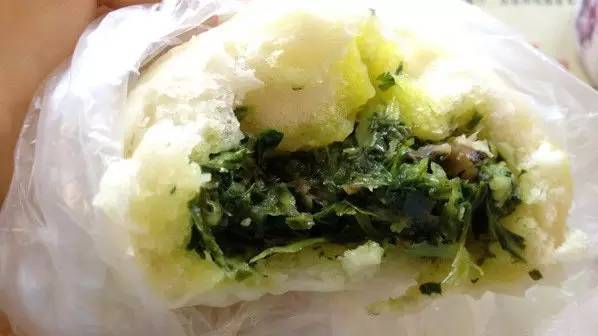
The vegetarian food package in Songyuelou is very popular. If you bite it, the fragrance of green vegetables and mushrooms will come to your nose ~
Osmanthus cake
Spring breeze Songyuelou Chenghuangmiao Old School Road Bailing Road intersection

Sweet and soft osmanthus cake, in addition to the faint taste of osmanthus, also has a faint smell of wine, as always delicious. The Green Wave Gallery is an old name of the Chenghuang Temple, and many people also come here.
Begonia cake
No.10 Wenchang Road, Hefenglou
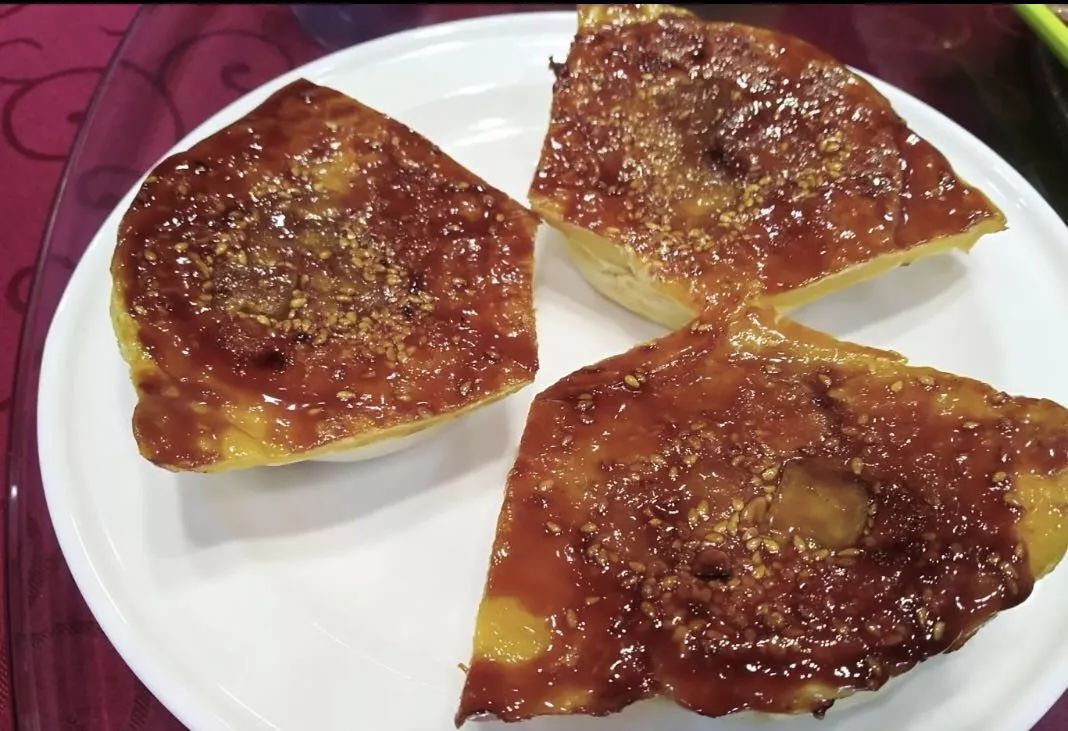
As a traditional dessert and pastry snack in Shanghai, the method of Begonia Cake is very simple ~ sweet bean paste is filled with soft flour, and some winter melon candy is wrapped in the outer layer, and sesame seeds, pine nuts and melon seeds are scattered on the surface. When it is almost out of the oven, sprinkle with sugar and bake it again. Before taking it out, the smell of Begonia Cake has spread, which is a very warm snack.
Nanxiang Steamed
2/F, No.69, Jiujiaochang Road

How can you come to the Chenghuang Temple without eating Nanxiang steamed buns? The stuffing of Nanxiang steamed buns can also change with the seasons. Add shrimps in early summer and crab meat, crab roe and crab oil in autumn.
Ningbo Tangtuan
Ningbo Tangtuan Branch No.110 Yuyuan Road
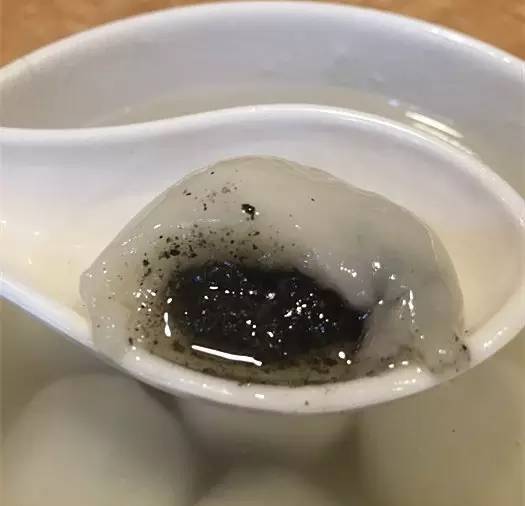
Soft glutinous dumplings are served after careful cooking. They are round and moist and look super cute. The black sesame stuffing is sweet but not greasy!
Address: Fangbang Middle Road, Shanghai
Opening hours: 08:00-21:00
Ticket price: free of charge
Transportation: Exit 3 of Yuyuan Station of Rail Transit Line 10.
-Nanjing Road Pedestrian Street-

Nanjing Road Pedestrian Street is the earliest commercial street established after the opening of Shanghai. In 1999, Nanjing Road Pedestrian Street was officially opened after renovation, enjoying the reputation of "the first commercial street in China". The high-profile Dongtuo section of Nanjing Road Pedestrian Street also officially lights up to "open the street". The Dongtuo section starts from Henan Middle Road in the west and Zhongshan Dongyi Road in the east, with a total length of 495 meters, connecting the People’s Square business circle and the Bund business circle. As a result, citizens can go directly to the Bund through Nanjing Road Pedestrian Street.
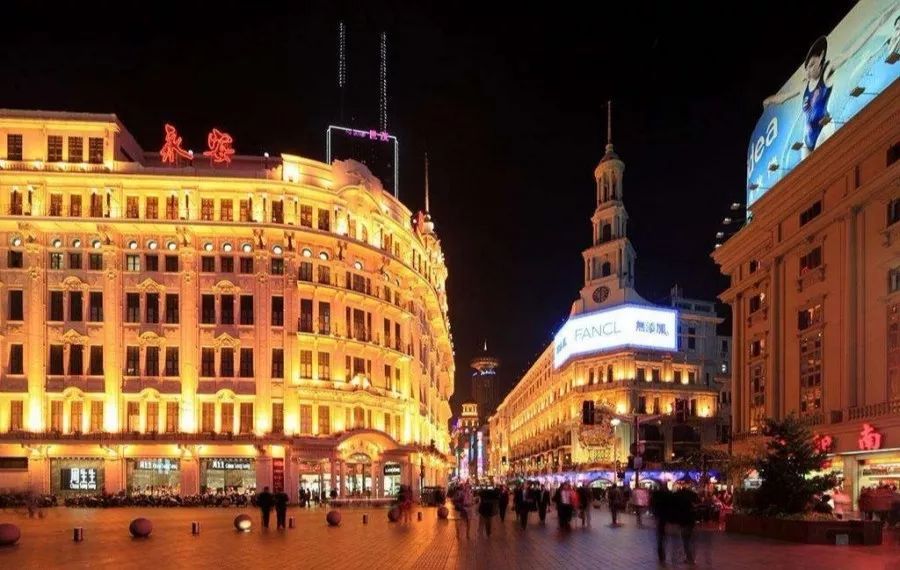
Visitors will pass through popular landmarks such as New World City, Shanghai Shimao Plaza, New World Maruko Department Store, Nanjing Building and Peace Hotel along the way.

Nowadays, several key projects in Dongtuo block of Nanjing Road Pedestrian Street will appear one after another, with old shops upgraded and rejuvenated, and the first and trendy shops settled, which has become a new landscape of Shanghai’s business.

New World Daiwan Department Store
In addition to a number of first-time stores and trendy stores, the face of many old brands in Nanjing Road Pedestrian Street is also quite eye-catching. Taikang Food, which has a history of one hundred years, took the lead in opening a new concept optimization shop in the pedestrian street, and introduced a series of online celebrity snacks, including Liangpin Shop, Qifen Sweet, Liaoji Bang Bang Chicken, White Rabbit and Zhong Xue Gao, which injected new vitality into the neighborhood.

Address: Nanjing East Road, Shanghai
Opening hours: all day
Transportation: Nanjing East Road Station of Rail Transit Line 10.
Source: network comprehensive information
Editor: Zhang Yifan, Gao Qin
The copyright of the pictures in this article belongs to the original author.
ShangguanNo. Author: Shanghai Changning
